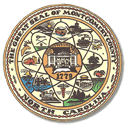Disinfectants, UV Light and Heat for Virus Inactivation
go.ncsu.edu/readext?682621
en Español / em Português
El inglés es el idioma de control de esta página. En la medida en que haya algún conflicto entre la traducción al inglés y la traducción, el inglés prevalece.
Al hacer clic en el enlace de traducción se activa un servicio de traducción gratuito para convertir la página al español. Al igual que con cualquier traducción por Internet, la conversión no es sensible al contexto y puede que no traduzca el texto en su significado original. NC State Extension no garantiza la exactitud del texto traducido. Por favor, tenga en cuenta que algunas aplicaciones y/o servicios pueden no funcionar como se espera cuando se traducen.
Português
Inglês é o idioma de controle desta página. Na medida que haja algum conflito entre o texto original em Inglês e a tradução, o Inglês prevalece.
Ao clicar no link de tradução, um serviço gratuito de tradução será ativado para converter a página para o Português. Como em qualquer tradução pela internet, a conversão não é sensivel ao contexto e pode não ocorrer a tradução para o significado orginal. O serviço de Extensão da Carolina do Norte (NC State Extension) não garante a exatidão do texto traduzido. Por favor, observe que algumas funções ou serviços podem não funcionar como esperado após a tradução.
English
English is the controlling language of this page. To the extent there is any conflict between the English text and the translation, English controls.
Clicking on the translation link activates a free translation service to convert the page to Spanish. As with any Internet translation, the conversion is not context-sensitive and may not translate the text to its original meaning. NC State Extension does not guarantee the accuracy of the translated text. Please note that some applications and/or services may not function as expected when translated.
Collapse ▲Cleaning followed by disinfection is a best-practice measure for prevention of COVID-19 and other viral respiratory illnesses in households and community settings. Current research says heat and UV light can be effective against the virus causing COVID-19.
Disinfectants:
- Chemical disinfectants like bleach and surface wipes and sprays are meant for use on non-living surfaces only.
- These compounds should NOT be used on the skin, ingested or injected into the body, or used on food.
- Alcohol is an active compound used in hand sanitizers and in surface disinfectants, but should be used according to manufacturer’s instructions.
Heat:
- There is limited data on using heat to inactivate the virus causing COVID-19.
- Using heat is currently recommended only for items washed in sinks and dishwashers, and laundry in a was or dry cycle.
- Applying high heat to the body can cause severe and permanenet damage.
- Don’t use a microwave to heat flammable items.
UV Light:
- Research suggests that UV light may be effective at inactivating the virus causing COVID-19.
- UV light should only be used by trained professionals for disinfection.
- Extensive exposure to UV light can cause severe damage to the skin and other organs and may cause certain cancers.
What Can You Do?
To reduce your chance of getting sick or spreading the virus, follow the steps below.
- Wash your hands often and use hand sanitizer.
- Follow physical distancing recommendations.
- Avoid touching your mouth, eyes and nose.
- Clean and disinfect surfaces properly.
- Wear a cloth face covering in public.




